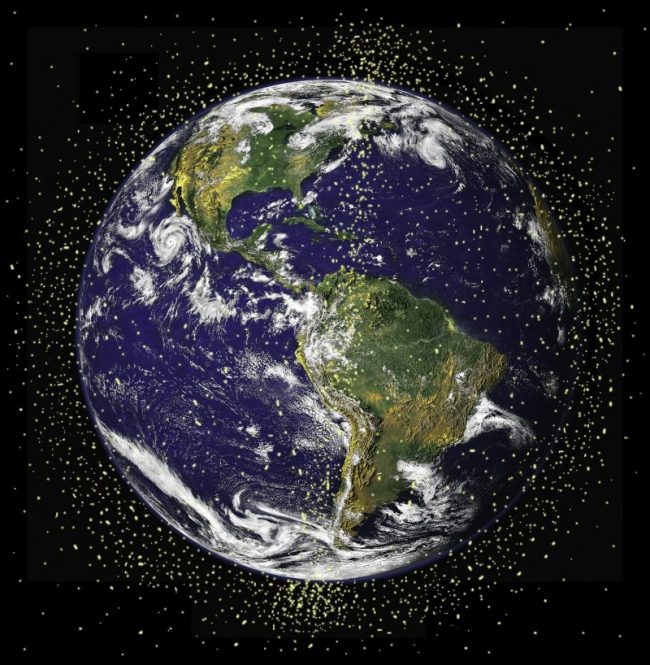
Update: According to Jonathan McDowell of the Harvard–Smithsonian Center for Astrophysics, who was tracking the pallet’s reentry, the space junk should have hit somewhere over the Pacific Ocean on March 8, 2024.
EP-9 has probably reentered by now, most likely over the Pacific Ocean
— Jonathan McDowell (@planet4589) March 8, 2024
That location would not be surprising. If you want a good visual of just how much of Earth’s territory is consumed by the Pacific Ocean, rotate this view of the 3D interactive globe until it fills the side of Earth you’re viewing. Although this was an uncontrolled reentry, controlled reentries usually aim for the Pacific Ocean, specifically an area called the spacecraft cemetery. Also called Point Nemo, Wikipedia calls it:
… the oceanic pole of inaccessibility, the location farthest from any land.
Discarded pallet was from 2020
In 2020, a Japanese supply ship arrived at the International Space Station. It brought along an equipment pallet to help astronauts replace old nickel-hydrogen batteries with new lithium-ion batteries. Then, in 2021, ground control jettisoned the SUV-sized pallet, and it began its long journey back to Earth. The pallet had been orbiting Earth for the past few years but reentered Earth’s atmosphere on March 8, 2024. The space junk was large enough that not all of it burned up in our atmosphere. According to Jonathan McDowell of the Harvard–Smithsonian Center for Astrophysics, around 1/2 a ton of fragments would have hit Earth’s surface.
Reentry of the EP-9 battery pallet jettisoned from ISS in 2021 is currently predicted (by Space Force) between 1230 UTC Mar 8 and 0830 UTC Mar 9. It will not totally burn up on reentry – about half a tonne of fragments will likely hit the Earth's surface.
— Jonathan McDowell (@planet4589) March 7, 2024
The problem of space junk
Last November, spacewalking astronauts lost a tool bag that floated off into space. The tool bag should reenter Earth’s atmosphere between March and July. However, the tool bag is much smaller and should completely burn up in our atmosphere. Some people were even able to spot it from space and took video of it.
Still, increasing space junk is a real problem in near-Earth orbit. According to Chris Impey of the University of Arizona, no one’s in charge of cleaning it up. More than 37,000 pieces of debris larger than a softball are currently orbiting Earth.
But this problem is not new. As early as 1978, NASA scientist Donald Kessler was pondering what would happen as more satellites took up residence in orbit around Earth. Now known as the Kessler syndrome, the scenario imagines the density of objects in low-Earth orbit becoming high enough that it creates a cascade of collisions, with each collision generating space debris that increases the likelihood of further collisions.
And the garbage is not just in orbit. In fact, there are 100 bags of human waste on the moon. When the Artemis mission finally reaches the moon, that number will grow.

Bottom line: Space junk jettisoned from the International Space Station in 2021 hit Earth on March 8, 2024. The space junk likely reentered over the Pacific Ocean.











